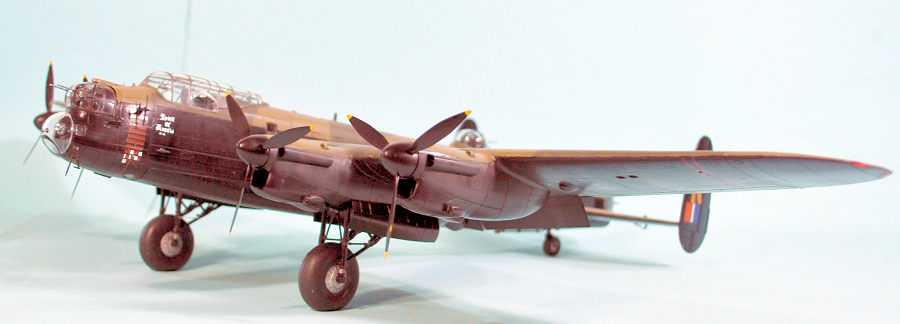
| KIT #: | 01F005 |
| PRICE: | $139.95 |
| DECALS: | Two options |
| REVIEWER: | Tom Cleaver |
| NOTES: | Xtradecal X48074 “Ton Up Lancs” |

| HISTORY |
As William Green put it: "Many aeroplanes of the Second World War became famous; few were truly great. Greatness is a quality that cannot be instilled in an aircraft on the drawing board or the assembly line. A great aircraft must have that touch of genius which transcends the good, and it must have luck - the luck to be in the right place at the right time. It must have flying qualities above the average; reliability, ruggedness and fighting ability, and, in the final analysis, it needs the skilled touch of crews to whom it has endeared itself. All these things the Lancaster had in good measure."
The Avro Lancaster, the backbone of the British strategic bombing offensive of Germany from its appearance in 1942 to the end of the war, is one of the seven most important Allied aircraft of the war - the others being the Hurricane, the Spitfire, the P-51 Mustang, the B-17, the B-29, and the C-47: aircraft that - had they not existed - changed the outcome of the war. As with many of the most useful aircraft of the war, the Lancaster did not spring to life in answer to an official specification, but was rather the result of the manufacturer's decision to take what appeared to be a good design that was obviously hobbled by a terrible official specification, and "get it right."
The Lancaster, like the Phoenix, arose from the ashes to ascend to the pinnacle of greatness. In the specific case, the ashes were the program that had produced the Avro Manchester, which was the result of specification P.13/36, calling for a twin-engined medium bomber; this resulted in two designs - the Handley-Page H.P.56 which eventually resulted in the Halifax, and the Avro 679, which was the Manchester.
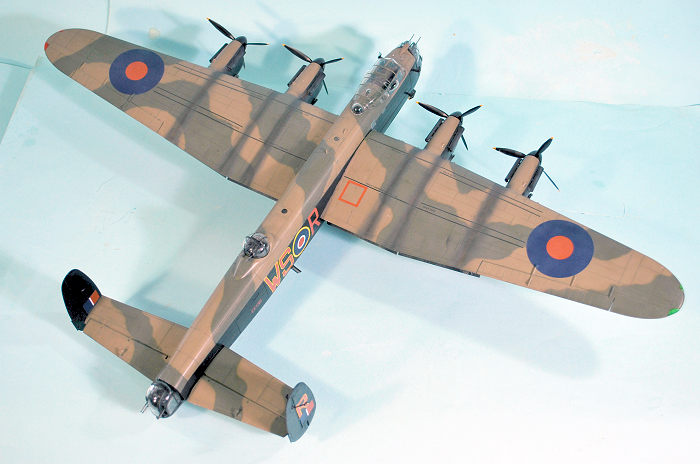 The Manchester
was robbed of any chance of successfully achieving the design specification
when it was saddled with the 24-cylinder X-type Rolls-Royce Vulture as its
powerplant. The first prototype, L7246, flew on July 25, 1939. The first
Manchester was delivered to 207 Squadron in December, 1940, and made its
operational debut with a raid on Brest the night of February 24-25, 1941.
The failure of the Manchester was due to the inability of Rolls-Royce to
cure the teething problems of the Vulture engine, which proved completely
unreliable in service.
The Manchester
was robbed of any chance of successfully achieving the design specification
when it was saddled with the 24-cylinder X-type Rolls-Royce Vulture as its
powerplant. The first prototype, L7246, flew on July 25, 1939. The first
Manchester was delivered to 207 Squadron in December, 1940, and made its
operational debut with a raid on Brest the night of February 24-25, 1941.
The failure of the Manchester was due to the inability of Rolls-Royce to
cure the teething problems of the Vulture engine, which proved completely
unreliable in service.
Avro produced only 169 Manchester I and IA aircraft, with Metro-Vickers producing an additional 43.
Due to the engine problems, Avro proposed the Manchester II, powered by either two Bristol Centaurus or two Napier Sabre engines, and the Manchester III, which would be powered by four Rolls-Royce Merlins. This last proposal resulted in the Lancaster. Use of the basic Manchester airframe allowed the prototype Lancaster to take to the air on January 9, 1941. Apart from a new wing center section to take the four Merlins, the rest of the airplane was virtually identical with the Manchester. The Air Staff enthusiastically ordered the Lancaster into mass production in February 1941, following successful flight trials, with the first production Lancaster flying on October 31, 1941.
44 Squadron undertook the first operational mission with the Lancaster on March 3, 1942, a mine-laying sortie in the Heligoland Bight. Public existence of the Lancaster was revealed following the low-level daylight attack made by twelve Lancasters of 44 and 97 Squadrons against the Maschinenfabrik-Augsburg- Nuremberg, which produced diesel engines for U-boats. Of the 12 aircraft sent, only five returned to base, though the target was heavily damaged. Squadron Leader Nettleton of 44 Squadron was awarded the Victoria Cross for this mission - the first of nine awards of the VC that would go to Lancaster crew during the war.
The basic Lancaster design was so right that the three different mark numbers associated with it refer only to engine changes: the Mk. I used the Merlin XX and 22; the Mk.II used the Bristol Hercules; and the Mk. III used the American Packard-built Merlin 28, 38, and 224. The Lancaster was also produced as the Mk.X in Canada, where the production of 433 examples of such a large and complex aircraft was largely responsible for the creation of the modern Canadian aircraft industry.
By 1943, the
Lancaster equipped the majority of Bomber Command units. It was in late 1943
that the aircraft was first equipped with the H2S centimetric radar. This
equipment went a long way toward allowing crews to find their targets, but
using it was like turning on a flashlight in a darkened room, due to the
fact that the Germans were able to develop a homing device quickly,
following the retrieval of an H2S set from a crashed Lancaster. What is
truly criminal is that Air Marshal Harris and the command staff of Bomber
Command wer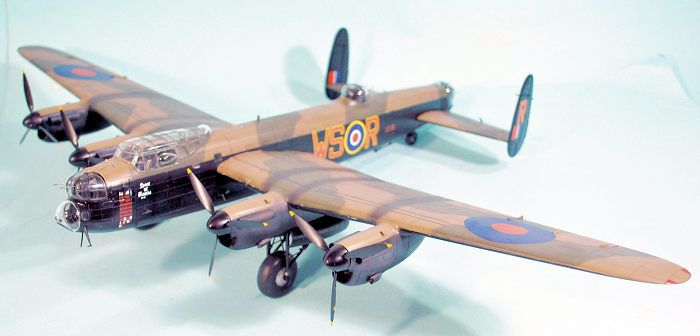 e aware of this German capability, but never told the crews that
they drew the fighters to them when they turned on the set. The story put
out by Bomber Command that the apparent explosions of bombers that crews saw
over Germany were "scarecrow shells" fired by German flak was a complete
lie; the Germans never used such a weapon, and every mid-air explosion and
fiery trail to the ground the crews saw was indeed a British bomber shot
down by the night fighters or hit by flak. Bomber Command lost 55,000 killed
while 10,000 became POWs, out of the 125,000 aircrew who served during the
war. The British lost more men over Germany than they did in the North
African campaign. Of 6,000 Lancasters that served on operations, 3,400 were
lost. One wonders how many were lost due to this policy by their commanders.
The only duty in World War II with greater casualties than flying as aircrew
in Bomber Command was to be a U-boat crewman.
e aware of this German capability, but never told the crews that
they drew the fighters to them when they turned on the set. The story put
out by Bomber Command that the apparent explosions of bombers that crews saw
over Germany were "scarecrow shells" fired by German flak was a complete
lie; the Germans never used such a weapon, and every mid-air explosion and
fiery trail to the ground the crews saw was indeed a British bomber shot
down by the night fighters or hit by flak. Bomber Command lost 55,000 killed
while 10,000 became POWs, out of the 125,000 aircrew who served during the
war. The British lost more men over Germany than they did in the North
African campaign. Of 6,000 Lancasters that served on operations, 3,400 were
lost. One wonders how many were lost due to this policy by their commanders.
The only duty in World War II with greater casualties than flying as aircrew
in Bomber Command was to be a U-boat crewman.
While the Lancaster was truly amazing in its ability to carry ever-heavier weapons, it is unfortunate that the result of the expenditure of all this vast collection of men and material did not measure up to what was sacrificed. The men of Bomber Command were truly "the flower of the British Empire," and they fought a harder, more difficult, and more dangerous war than was the experience of their American allies, who lost more men in the strategic bombing campaign than the Marines lost in all Pacific battles from Guadalcanal to Okinawa. The crews were fully the equal of their mount and the two together might have been a decisive force in the outcome of the war beyond mere destruction, had Churchill been willing to take the political heat of firing "Bomber" Harris, OC of Bomber Command in January 1944, for gross insubordination and disobedience - a charge that was made against him by his American allies for his refusal to meaningfully participate in Operation Pointblank, the bomber offensive against the Luftwaffe and the German aircraft industry that had been determined at the Casablanca Conference in February 1943.
Harris' single-minded policy of the area bombing of German cities might have made sense in 1942 when he was given command - in those days 80 percent of British bombers did not drop their bombs within 10 miles of their target, due to their inability to successfully navigate over Germany by night. By January 1944, Harris had lost nearly 400 of the 600 bombers he would lose in the "Battle of Berlin" that was finally called off in March 1944 when General Eisenhower was given direct control of the Allied strategic bombing forces in preparation for the coming invasion. Throughout his career, Harris would have no truck with "panacea merchants," his term for individuals in and out of the RAF who disagreed with his strategy and repeatedly tried to direct the bomber offensive against specific industries.
When Bomber
Command, along with VIII Air Force, finally went after the German synthetic
oil industry in the summer of 1944 - missions Harris only took on after the
greatest resistance he could muster against them - the strategic bombers
finally had a real and serious effect on the enemy worthy of the effort to
field them. The ability to find and strike these plants had existed within
Bomber Command for a year prior to the missions being flown. Had the
synthetic oil industry been hit in late 1943 the way it was hit in July and
August 1944, the bomber baron's belief that they could decisively defeat the
Germans to the point where Allied troops would walk ashore in the invasion
might actually have happened. The strikes of the summer of 1944 - which were
strangely not followed up for several months, despite immediate knowledge of
both their e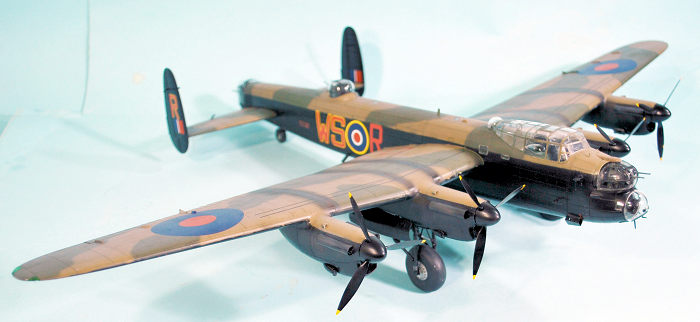 ffectiveness and their impact on German war-fighting abilities -
practically grounded the Luftwaffe and stopped the Panzers on all fronts for
lack of fuel. Harris persisted in his "morale bombing" to the end, making
him the most obvious of the failed disciples of Air Marshal Trenchard's
adoption of the so-called "theories of air warfare" advanced by Giulio
Douhet.
ffectiveness and their impact on German war-fighting abilities -
practically grounded the Luftwaffe and stopped the Panzers on all fronts for
lack of fuel. Harris persisted in his "morale bombing" to the end, making
him the most obvious of the failed disciples of Air Marshal Trenchard's
adoption of the so-called "theories of air warfare" advanced by Giulio
Douhet.
As Max Hastings pointed out in his terrific history, "Bomber Command": "The morale of the German people remained unbroken to the end, despite growing awareness that the war must be lost, and despite the increasing indifference of their Fuehrer to their fate... even in the ruined cities people queued to pay their taxes at temporary offices. After Big Week in February 1944, Speer and Milch marveled at the manner in which the aircraft workers labored in assembly lines created in the open air in freezing weather, the heated factories having been reduced to rubble. They repaired damage, restored production - even made their own shattered homes somehow habitable - with less assistance than the British authorities had provided for their own people during the Blitz. What was done in Germany between 1942 and 1944 was not an economic miracle - Speer was extremely able but he was not a genius. It was a triumph of the German people in the face of the utmost suffering, paralleling that of the British in 1940 and 1941. The assumption upon which the RAF had built its area-bombing campaign, that Germans were liable to moral collapse in a way that the British had shown in 1940 that they were not, had been proven totally unfounded."
In 1946, after reading the report of the U.S. Strategic Bombing Survey, Albert Speer recorded in his "Secret Diaries": "It seems to me that the book misses the decisive point. Like all other accounts of the bombing that I have so far seen, it places its emphasis on the destruction that air raids inflicted on German industrial potential and thus upon armaments. In reality, the losses were not quite so serious. The real importance of the air war consisted in the fact that it opened a second front long before the invasion of Europe. That front was the skies over Germany. The unpredictability of the attacks made the front gigantic. Defense against air attacks required the production of thousands of anti-aircraft guns, the stockpiling of tremendous quantities of ammunition all over the country, and holding in readiness hundreds of thousands of soldiers. As far as I can judge from the accounts I have read, no one has yet seen that this was the greatest lost battle on the German side." Later, in his book "Inside The Third Reich," Speer reasserted the view he had taken during his post-war interrogations, that bombing had been ineffective in cracking Germany until the closing phase of the war when the synthetic fuels industry was attacked and destroyed.
The Lancaster and its crews may have been ill-served by a lack of vision on the part of their commander, but that in no way minimizes the accomplishments of the crews and their airplane against difficult odds in a terrible and dangerous battlefield. The Lancaster is truly deserving of its reputation as one of the greatest airplanes ever built, and its crews as being among the bravest.
For anyone wanting to learn more of the operational history of the Lancaster and its crews in the war they fought, I cannot recommend too highly Max Hastings' "Bomber Command," one of the best-written and most informative history books it has ever been my pleasure to read and re-read. It is now out of print, but available on-line.
Lancaster B. Mk. I EE136 “Spirit of Russia”:
Of the 7,000
Lancasters built, there were only 36 that survived more than 100 operations.
The average life of a Lancaster was 25 missions. EE136 “Spirit of Russia”
flew 109 missions, making her the top-scoring Lancaster of the war. From her
first mission on June 11, 1943, to her last with 9 Squadron on October 19,
1944, 86 Lancaster bombers were assigned to the squadron. Of these, 50 were
lost to enemy action, another five crashed at home, three crashed in Russia
on the first Tirpitz raid and four were transferred to other squadrons only
to be lost by them. One of the most memorable raids EE136 was involved in
was to Berlin on the night of January 28, 1944. Hitler's newly built
Chancellery was among the wreckage.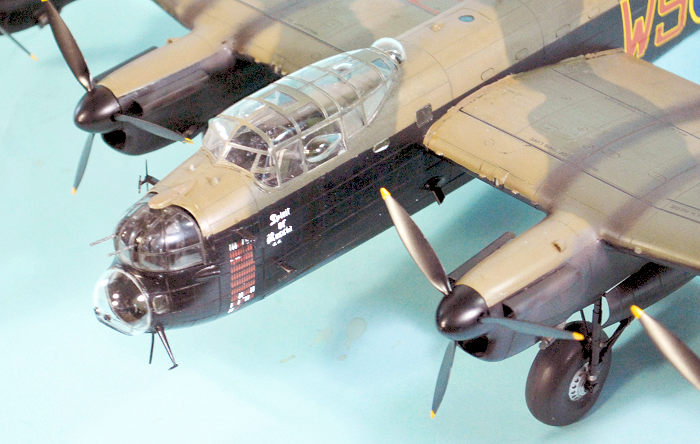
In October 1944, with 93 ops to her credit, EE136 was transferred from 9 Squadron to newly-formed 189 Squadron, where between November 1, 1944, and February 3, 1945, nine out of 34 Lancaster bombers were lost. EE136 flew another 21 missions before being retired as wear-weary; the last raid she carried out before being pensioned off was Karlsruhe, Germany, on February 2, 1945, the worst night of the war for 189 Squadron which lost four Lancasters and crews that night.
EE136 was flown by 42 different pilots, and survived 14 missions to Berlin. A total of 315 men flew in operations in EE136 and all came home in her safely. Shockingly 101 of them were later killed in other aircraft. The most 'capped' captain of EE136 was Flight Officer Roy Lake who flew her on 22 missions.
However, instead of taking pride of place in a museum due to her record, EE136 was deemed surplus to requirements by the RAF. Following the war, she was used as a training tool at RAF Cranwell in Lincolnshire but she fell out of favor and in 1954 was set on fire during a routine RAF fire fighting drill at Sutton on Hull station in Yorkshire which closed in 1961.
| THE KIT |
H-K Models first released a Lancaster kit in 1/32 in 2018. This 1/48 kit was released this year, 2021. It is a “scaledown” of the larger kit, in the same way the 1/48 B-17G is a scaledown of their 1/32 B-17G. The kit is not as complex as the larger kit, but it is the most detailed 1/48 Lancaster, with the best production quality.
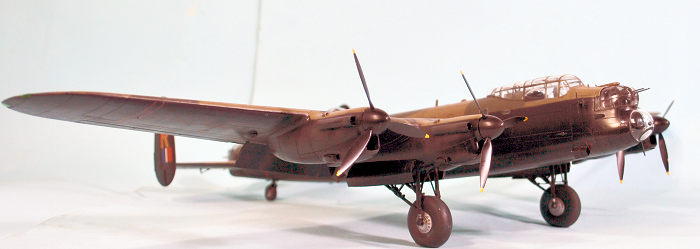 The kit has the
same beautifully-petite surface detail one expects in an H-K Models kit. The
three gun turrets are models in their own right. Full Merlin XX engines are
provided, which will provide a good basis for any modeler wishing to
construct a diorama of a Lancaster undergoing maintenance.
The kit has the
same beautifully-petite surface detail one expects in an H-K Models kit. The
three gun turrets are models in their own right. Full Merlin XX engines are
provided, which will provide a good basis for any modeler wishing to
construct a diorama of a Lancaster undergoing maintenance.
Cartograf decals are provided for two well-known Lancasters: “Admiral Prune,” W4118,106 Squadron, December 1942; and “S” for Sugar, R5868, 467 Squadron, May 1944 “No Enemy Plane Will Fly Over The Reich Territory”.
The only other 1/48 Lancaster released was from Tamiya, first released some 43 years ago. All of the problems associated with that kit, such as the poorly-molded engine nacelles, are solved with this kit. Interestingly, the new H-K Models kit sells MSRP for only $12 more than the current price Tamiya has posted for their kit. There is absolutely no comparison between the two in terms of quality.
| CONSTRUCTION |
As with all modern CAD-kits, one must take care to clean off all the sprue nibs from every part because fit is very precise. If you fail to do this, problems will cascade throughout the project like a snowball rolling downhill. I began construction of this kit with the wing sub-assemblies. I started with the Merlin engines, which need to be fully assembled so one can attach both the exhaust stacks and the props. These are nicely detailed and provide the basis for a real detail upgrade for anyone who wants to do a diorama. Unlike the Tamiya kit, the engine cowlings all fit perfectly and I only needed to scrape off the excess glue along the centerlines of the four nacelles.
The flaps are fully detailed and can be assembled either up or down without problem - a nice touch since many kits with “positionable” flaps are really only “positionable” in the down position. I decided to do these down, just because I’d never had a Lancaster kit with that option.
I assembled the landing gear and painted it. After painting the lower surfaces of the wings with Tamiya X-18 “Semi-gloss Black,” I attached the landing gear and gear doors. I then assembled the horizontal stabilizers and painted them.
Next was the gun turrets. These are highly detailed and could also become the subject of increased detail for a diorama. The fact that they are painted overall black means you won’t see a lot of the detail. I left the clear parts off for later painting and assembly.
 I finally
turned to the fuselage. There is a full interior provided, which I
assembled, only to find when the fuselage was closed up that one can really
only see the pilot’s position and the edge of the navigator’s table behind
him. If I was to do this again, I would save time and not deal with all the
never-to-be-seen-again detail. The kit provides a full bomb load of six
1,000-lb bombs and a 4,000-lb “cookie” in a nicely-detailed bomb bay, but I
opted to close the bomb bay doors and preserve the aircraft’s lines.
I finally
turned to the fuselage. There is a full interior provided, which I
assembled, only to find when the fuselage was closed up that one can really
only see the pilot’s position and the edge of the navigator’s table behind
him. If I was to do this again, I would save time and not deal with all the
never-to-be-seen-again detail. The kit provides a full bomb load of six
1,000-lb bombs and a 4,000-lb “cookie” in a nicely-detailed bomb bay, but I
opted to close the bomb bay doors and preserve the aircraft’s lines.
Early Lancasters had the windows on the fuselage, with later production models replacing those with metal plates. Some early aircraft had their windows painted over. You need to check this when deciding what airplane you are doing. Fortunately, I could find photos of every Lancaster for which I had decal options. EE136 either had her windows painted over or replaced with metal.
You should also check whether the airplane you are modeling had the radar antennas on the forward fuselage; not all did, and nicely enough H-K has the mounting hole for that flashed over in case you are not going to use it. As with the B-17s and B-25s, the wings do not have to be glued in position. They can be slid into position and remain solid, or be removed later if you are storing the model. This is also the case with the horizontal stabilizers, and is a nice touch.
| COLORS & MARKINGS |
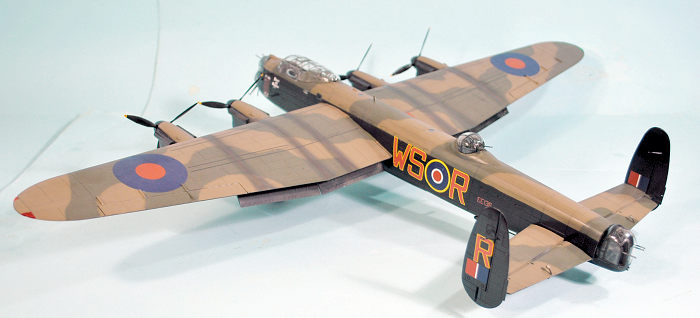 Masking the
canopy and gun turrets took several hours. I suggest when Eduard releases a
mask for this that you splurge and buy it. I painted the upper surfaces with
the Lancaster pattern of Dark Earth (mixed) and XF-82 RAF Dark Green, then
masked that off and painted the rest with Tamiya X-18 “Semi-gloss Black,”
which I also painted the propellers and spinners. When finished, I gave the
model a coat of clear gloss.
Masking the
canopy and gun turrets took several hours. I suggest when Eduard releases a
mask for this that you splurge and buy it. I painted the upper surfaces with
the Lancaster pattern of Dark Earth (mixed) and XF-82 RAF Dark Green, then
masked that off and painted the rest with Tamiya X-18 “Semi-gloss Black,”
which I also painted the propellers and spinners. When finished, I gave the
model a coat of clear gloss.
I used the kit decals for the national markings and stencils, and the Xtradecal Sheet X48074 “Ton Up Lancs” to do EE136 as she looked at the end of her career with 9 Squadron in November 1944.
I gave the black surfaces a coat of Clear Satin, and the upper surfaces a coat of Clear Flat. I used XF-69 “NATO Black” to stain the engine cowlings and start the basis of the exhaust stains. The stains were followed with some XF-63 “German Grey,” some XF-68 “NATO Brown” and some X-19 “Smoke”.
I then unmasked the clear parts, assembled the gun turrets and then glued them in position. I decided to go with gluing the horizontal stabilizers in position for strength, while attaching the wings without gluing them.
| CONCLUSIONS |
Definitely the best 1/48 Lancaster on the market, this beats the old Tamiya kit 50 ways from Sunday - and unlike the B-17 kit, it is competitive with the older kit cost-wise nowadays. The kit is complex but not complicated and presents no difficulty that an experienced modeler will have any problem with. The end result is very impressive. Highly recommended for all Lancaster fans.
29 July 2021
Copyright ModelingMadness.com. All rights reserved. No reproduction in
part or in whole without express permission.
Thanks to H-K
Models for the review kit. If you would like your product reviewed fairly and fairly quickly, please
contact
the editor or see other details in the
Note to
Contributors.